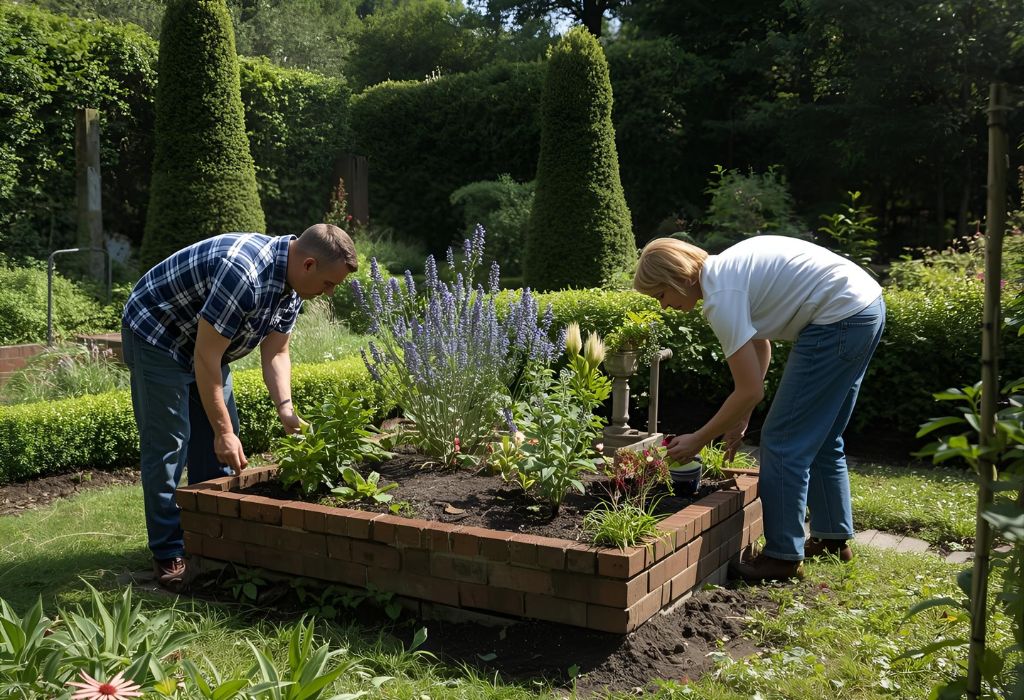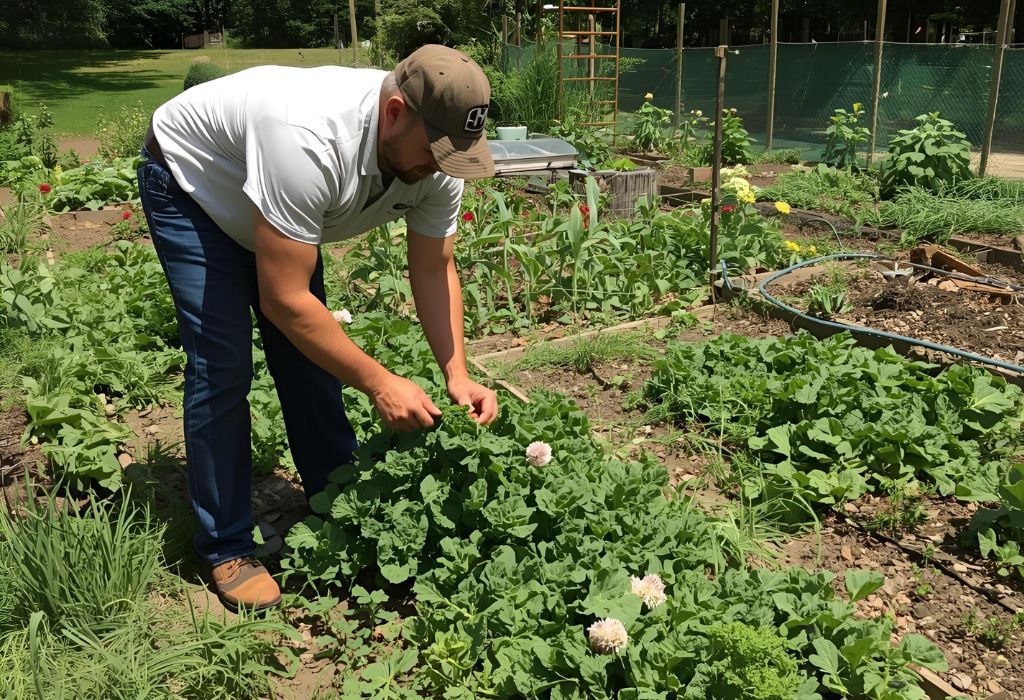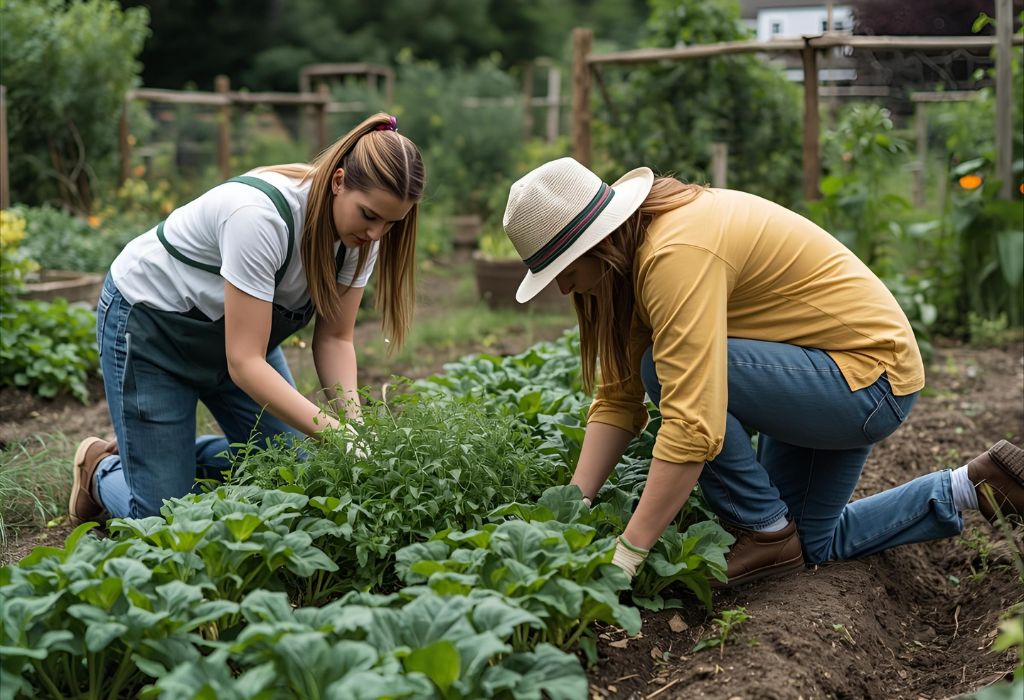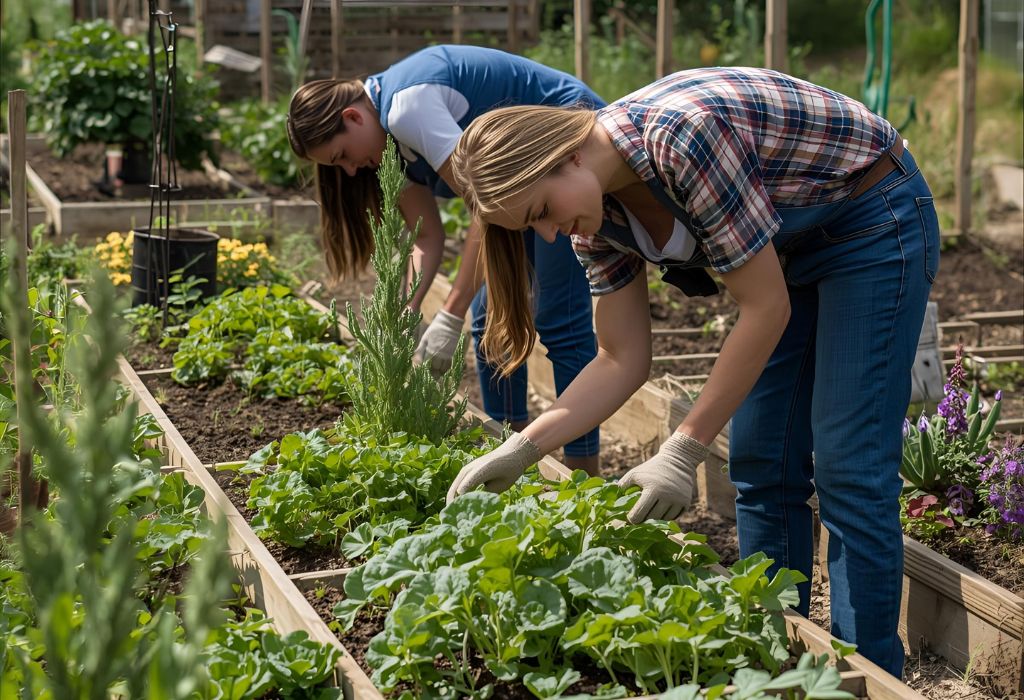You spend hours pulling weeds from your vegetable garden, only to see them grow back within days. The constant battle makes you wonder if there’s a quicker solution.
Many gardeners turn to weed block, also known as landscape fabric, as a way to control weeds. It seems like the perfect shortcut, but questions remain about whether it works well in vegetable gardens.
Weed block is a barrier that sits on top of the soil to block sunlight and stop weeds from growing. It is commonly used in flower beds and pathways, but its role in vegetable gardens is more controversial.
Some gardeners love it because it saves time and keeps rows clean. Others avoid it because it may affect soil health, earthworms, and long-term fertility.
Research shows that weeds can reduce vegetable yields by up to 50% if left uncontrolled .
Weed control is critical, but the method you choose can impact the success of your crops.
While weed block can prevent unwanted growth, it may also limit organic matter from reaching the soil. Over time, this can affect the balance of microbes and reduce soil quality.
There are also eco-friendly alternatives such as straw, cardboard, or compost mulch. These options control weeds while still enriching the soil naturally.
The question isn’t just “can you use weed block in a vegetable garden,” but whether it’s the best option for long-term health and productivity.
This guide explores the pros and cons of weed block, how to use it correctly, and natural alternatives that may work even better.
What Is Weed Block and How Does It Work?

Weed block, also called landscape fabric, is a material used to stop weeds from growing. It works by blocking sunlight, which weeds need to germinate and thrive.
The material is usually woven polypropylene or spunbond polyester. These synthetic fabrics are durable and often used in landscaping.
Some versions are biodegradable, made from natural fibers. These are marketed as eco-friendly options for temporary weed control.
Weed block is laid directly over the soil surface. Holes are cut where plants will be placed, while the rest of the ground stays covered.
Water and air can pass through the fabric. However, organic matter like compost or mulch may struggle to integrate naturally.
This method is popular in flower beds, tree rings, and pathways. It reduces weeding chores and helps maintain a neat appearance.
In vegetable gardens, the application is more complex. Plants have different needs, and soil health is more critical for food crops.
Understanding how weed block works helps gardeners decide whether it is suitable for vegetables.
What is weed block?
It is a fabric that prevents weeds by blocking sunlight.
What is it made of?
Synthetic fibers like polypropylene or natural biodegradable materials.
Does it let water through?
Yes, it is designed to allow moisture and air.
Where is it used most?
Landscaping, flower beds, and pathways.
Can You Use Weed Block in Vegetable Gardens?
Yes, you can use weed block in vegetable gardens, but it comes with trade-offs. It may be helpful in some areas and harmful in others.
The fabric is most effective when used for pathways between rows. This keeps walking areas weed-free without interfering with crop soil.
When placed directly under vegetables, weed block can create problems. It may prevent organic matter from enriching the soil over time.
Earthworms and beneficial microbes may be restricted by the barrier. These organisms are essential for nutrient cycling and soil health.
In the short term, weed block can make gardening easier. Less weeding means more time focusing on planting and harvesting.
In the long term, soil fertility may decline. Nutrient exchange between mulch, compost, and soil becomes limited under the fabric.
Many organic gardeners prefer to avoid weed block altogether. Instead, they rely on mulching and natural weed suppression.
The choice depends on your goals. If convenience outweighs long-term soil health, weed block may be worth trying in moderation.
Can I use weed block under vegetables?
Yes, but it has benefits and drawbacks.
Is it better for pathways?
Yes, pathways are the best place for it.
Does it harm soil?
It may reduce fertility over time.
Do organic gardens use it?
Generally no, they prefer natural mulches.
Pros of Using Weed Block in Vegetable Gardens

Weed block reduces weed competition for nutrients. Vegetables can access more water and minerals without competing roots.
It saves time by cutting down on hand-weeding. Gardeners can spend more energy on planting and harvesting instead.
The fabric helps keep rows neat and organized. This improves garden appearance and makes paths easier to maintain.
It reduces soil moisture loss by blocking evaporation. Plants benefit from consistent hydration.
Weed block also prevents soil erosion. In sloped gardens, it helps hold soil in place.
It can extend the life of mulch when placed underneath. Mulch stays clean and decomposes more slowly.
For high-weed areas, weed block provides strong suppression. It is especially useful during peak summer growth.
The convenience makes it appealing for busy gardeners. Less weeding means less back strain and frustration.
Does weed block save time?
Yes, it reduces manual weeding.
Does it help with water retention?
Yes, it prevents evaporation from the soil.
Is it good for high-weed gardens?
Yes, it provides effective suppression.
Does it keep mulch in place?
Yes, by creating a separating layer.
Cons of Using Weed Block in Vegetable Gardens
Weed block can interfere with soil health over time. It blocks organic matter from integrating naturally into the soil.
Worms and microbes struggle to thrive under the fabric. These organisms are essential for healthy vegetable growth.
The fabric may trap excess heat in hot climates. Overheated soil can stress or damage delicate roots.
Roots may have difficulty spreading if the fabric is too thick. This reduces crop performance and yield.
Synthetic weed block is not eco-friendly. When it breaks down, it creates plastic waste in the soil.
Over time, the fabric can clog with dirt and stop allowing water through. This creates uneven watering and plant stress.
The initial cost of weed block can also be high. For large gardens, the expense adds up quickly.
Removing old fabric is another hassle. It can tear, fray, and leave behind debris.
Does weed block affect soil life?
Yes, it reduces activity of worms and microbes.
Can it overheat soil?
Yes, it traps heat in warm climates.
Is it eco-friendly?
Synthetic versions are not.
Does it last forever?
No, it breaks down and creates waste.
Alternatives to Weed Block in Vegetable Gardens

Organic mulch is one of the best alternatives. Straw, leaves, or grass clippings suppress weeds while enriching the soil.
Living mulches, such as cover crops, provide natural weed control. They also improve soil structure and add nutrients when turned under.
Cardboard and newspaper layers are simple and effective. They block weeds while breaking down into organic matter.
Compost spread over the soil both feeds plants and reduces weeds. A thick layer discourages growth while improving fertility.
Hand-weeding remains part of gardening. However, with mulch or cover crops, the workload is significantly reduced.
Strategic planting helps suppress weeds naturally. Dense spacing shades the soil and limits weed germination.
Plastic mulches are another option, but they share some drawbacks with weed block. Still, they are effective for short-term weed control.
Combining methods often provides the best results. Mulch plus strategic planting gives both control and soil benefits.
What is the best alternative to weed block?
Organic mulches like straw or leaves.
Can cardboard work?
Yes, it blocks weeds and decomposes.
Do cover crops help?
Yes, they suppress weeds naturally.
Is hand-weeding still needed?
Yes, but much less with mulching.
Best Practices for Using Weed Block in Vegetable Gardens
If you decide to use weed block, place it on pathways instead of planting beds. This prevents weeds while protecting soil health in growing areas.
Always combine weed block with mulch. Mulch provides extra suppression and protects the fabric.
Choose biodegradable fabrics when possible. These break down naturally and reduce plastic waste.
Cut planting holes carefully. Make sure roots have enough room to spread.
Remove the fabric at the end of each growing season. This prevents compaction and keeps soil healthier long-term.
Monitor the soil under the fabric regularly. Look for signs of compaction, dryness, or reduced fertility.
Use weed block sparingly as part of a broader strategy. Do not rely on it exclusively for weed management.
Balance convenience with sustainability to protect your soil.
Where should I place weed block?
On pathways, not directly under crops.
Should I add mulch on top?
Yes, for better results and protection.
Can I leave it year-round?
Not recommended, remove it each season.
Are biodegradable fabrics better?
Yes, they are safer for the environment.
Expert Opinions and Studies on Weed Block in Vegetable Gardens

Many horticulturists caution against using weed block in vegetable beds. Research shows it can reduce microbial activity in the soil.
Soil scientists emphasize the importance of organic matter. Weed block limits how much mulch and compost reach the soil.
Farmers sometimes use it short-term for specific crops. For example, strawberries are often grown on fabric for easier harvest.
Organic certification often discourages or bans synthetic weed barriers. This is due to their negative impact on long-term soil quality.
Some experts suggest biodegradable alternatives as a compromise. These provide weed control without long-term damage.
Sustainable gardening advocates recommend mulching instead. Natural mulch improves soil health while still suppressing weeds.
The consensus is clear: weed block can work, but it should be used carefully. Long-term reliance is not ideal for vegetable production.
Understanding research helps gardeners make informed decisions.
Do experts recommend weed block?
Not usually for vegetable beds.
Do farmers use it?
Yes, sometimes for short-term crops.
What does research say?
It reduces soil biology under fabric.
Is it allowed in organic gardens?
Often restricted or discouraged.
Conclusion
Weed block can be used in vegetable gardens, but with caution. It provides strong weed suppression but may harm long-term soil health.
It works best in pathways and between rows. Using it directly under crops carries risks for fertility and microbial life.
Pros include less weeding, better water retention, and neat rows. Cons include reduced soil activity, environmental impact, and eventual waste.
Natural alternatives like straw, cardboard, or compost provide weed control while feeding the soil. They are often better for long-term sustainability.
For anyone asking “can you use weed block in a vegetable garden,” the answer is yes — but only if used sparingly and strategically. The healthiest gardens balance weed control with soil enrichment.
I’m Maya L. Greenwood, a lifelong plant lover who believes anyone can grow something beautiful with the right guidance. After years of testing soil mixes, pruning methods, irrigation tricks, and pest-safe solutions, I started EasyGardenTips.com to turn hard-won lessons into step-by-step advice. From seed starting and container gardens to composting and seasonal checklists, my goal is to make gardening simple, sustainable, and fun.
